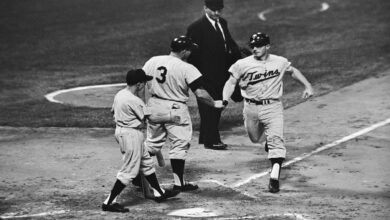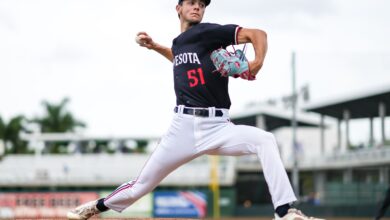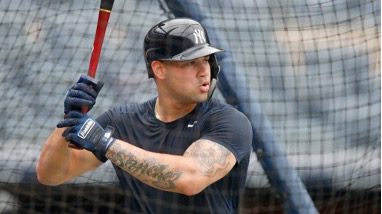

The Minnesota Twins enter 2012 with, almost on the button, a $100 million opening-day payroll. Last season, they spent about $115 million and lost 99 games. For the majority of baseball teams, except for you crazies in New York and Boston, $100 million in player salary would be welcome. For the Twins, however, there were many areas where the front office could have improved the team going into this season, but failed completely to do so. And there are a few areas where the front office did spend money, but may not have made wise investments.
Just to avoid argument at the outset, there’s no point in discussing the $23 million Joe Mauer will be paid this season, and the $15.5 million Justin Morneau will earn. Those were, in legal terms, bargained-for contracts that were primarily based on those players’ contributions in the first decade of the 2000s. Although true to an extent, it’s futile to cite those contracts as the source of the Twins’ woes. But there are other sources of frustration for this fan.
First, although I understand the principle behind signing Jamey Carroll to play shortstop, and agree with it in the abstract, I’m not at all convinced the Twins needed to spend $2.75 million on Carroll this season and $3.75 million next year. There’s also a $2 million team option for 2014 — my quick math tells me that Carroll will be 72 years old going into that season. Quite simply, I think that prospect Brian Dozier can do the same job — perhaps even better — making major-league minimum salary. If the Twins needed Carroll for any reason, they should have him at second base, where he is better defensively. He could play there in place of Alexi Casilla, who will be making $1.38 million this season, and who has yet to demonstrate that he can both start and finish a season healthy and productive.
Second, there’s the outfield situation. I understand why the Twins replaced Michael Cuddyer, a successful and productive veteran outfielder, with Josh Willingham, a successful and productive veteran outfielder. They are remarkably similar players, and Willingham is a little younger and ended up being considerably cheaper than Cuddyer. From that standpoint, it was a good signing for the Twins. For the next three seasons, the Twins will pay Willingham $7 million annually. Not that Willingham can’t be great for the Twins, but there are other players within the Twins’ system who arguably could come close to matching Willingham’s production offensively, and certainly would represent a defensive improvement. Joe Benson comes to mind. Perhaps not in 2012, but in 2013, Benson likely will have earned a job in the major leagues. Instead of Willingham for three years, the Twins could have contracted with another veteran seeking a one-year deal, with the idea that this player would be a placeholder for Benson. A 2013 outfield of Ben Revere, Denard Span and Benson would track down a lot of fly balls, wreak havoc on the base paths and also be less expensive than what it projects to be right now.
It appears to me the Twins are equally as concerned with selling tickets in 2012 as they are with winning ballgames. They slashed payroll by 13 percent, but made a supposed impact move by signing Willingham to, believe it or not, the largest free-agent contract in Twins history. In other words, they quietly reduced their financial obligations, but are still hoping to sell out Target Field by saying, “hey, we signed Willingham and spent some serious money this offseason.” It’s tough to sell a Cuddyer departure with a Benson promotion. Similarly, it’s difficult to tell your fan base that the $15 million investment in a Japanese shortstop, Tsuyoshi Nishioka, was a complete bust. But the Twins were able to deliver the Nishioka news this past week, and the fans were happy that, at least for now, they don’t have to worry about Nishioka taking up a spot on the Twins’ bench. There’s no reason the organization could not have sold this fan base on a cheaper one-year deal for a major-league veteran to man right field, if it also used that savings to upgrade the pitching. For a team that is counting its pennies, $7 million per season for three seasons on an outfielder who could turn out not to be a necessity by 2013 is a large risk. That money could have gone toward a legitimate starting pitcher, or on its own would have purchased two very solid relief pitchers.
If any team in baseball can be considered a rebuilder with a $100 million payroll, it’s the Twins. It almost sounds crazy to say, but it’s true. With nearly $40 million locked up in Mauer and Morneau — two of the most uncertain players in the game — the resulting $60 million doesn’t get the team much, especially with Carl Pavano earning $8.5 million to presumably “eat innings” and perhaps give up the most hits in baseball, and Nishioka earning $3 million in exchange for never again setting foot in Target Field. There’s only roughly $50 million left for the rest of the starting rotation, the bullpen and the remaining position players. In a division with the suddenly great Detroit Tigers, it’s difficult to make a playoff contender out of $50 million unless your farm system is fantastic and you have a great crop of young starting pitchers under contract (think Tampa Bay Rays).
In the end, payroll obligations to players whose production could potentially be replaced by major-league minimum replacements this year or next, could cost the Twins in 2012. Fortunately, payroll space is coming off the books in 2013 (Pavano and Francisco Liriano, among others, will reach free agency unless they sign an extension with the Twins). If the Twins remain steadfast in their quest to max out at a $100 million payroll in 2013 — despite the fact that I have yet to hear a legitimate argument as to why they decided to reduce payroll in the first place coming off a 99-loss season — the payroll space actually could go much further in 2013, especially if pitching prospects Kyle Gibson and Liam Hendriks demonstrate they are capable of assuming a spot in the Twins’ starting rotation. As always in baseball, there’s room for hope. But right now, there is also considerable frustration over the way this organization has handled its payroll, both with respect to offseason signings and the decision to actually lower payroll following a horrible 2011 campaign.





